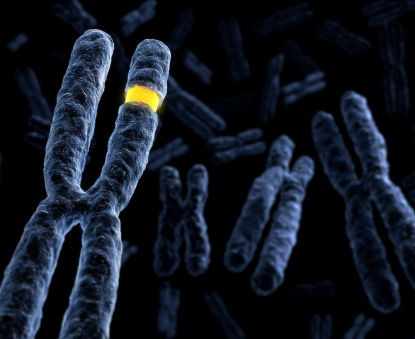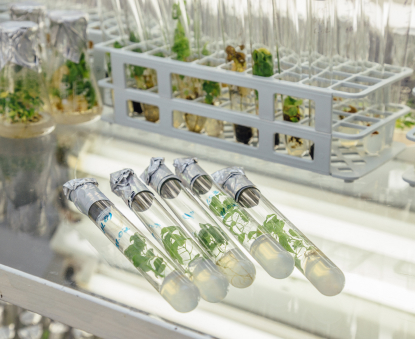Biotechnology
Improving on nature

GENE ADDITION
In parallel to the development of advanced genetic engineering techniques, recent decades have seen an explosion in the fundamental scientific understanding of the biosynthetic pathways that control plant composition and function, at both the metabolic and genomic levels. Advanced biochemistry, metabolic flux analysis, and molecular characterisation of gene function have combined to identify most of the crucial genes involved in the synthesis of individual fatty acids and their assembly onto complex storage molecules such as triglyceride oils and wax esters. This information and the related gene toolkit have opened up the new field of metabolic engineering, where plants can be equipped with new biosynthetic capabilities by transformation with genes encoding new enzymatic conversions, or entire biosynthetic pathways.
One of the earliest examples of adding new biosynthetic steps in oil plants was the high-laurate rapeseed variety developed by US company Calgene LLC during the 1990s. It was intended to serve as a domestic replacement for imported palm kernel oil, which is rich in laurate (C12:0), an important component in surfactants and personal care products. Calgene transformed rapeseed plants with two key genes – a C12-specific thioesterase gene from the California Bay Laurel tree, and a C12-specific acyltransferase gene from coconut. These genes interrupted fatty acid elongation at the 12-carbon stage and enabled the 12:0 (laurate) to be transferred into all three positions on the triglyceride molecules.
This two-gene strategy generated levels of laurate equivalent to palm kernel oil, in seeds that had normal levels of oil, and which were able to mobilise these oils in the usual way to support seed germination. The new high-laurate rapeseed was named Laurical™ and entered commercial production in 1995. However, despite the ground-breaking nature of this technical achievement, commercial introduction was discontinued shortly thereafter following the acquisition of Calgene LLC by Monsanto in 1996.
Since that time, the complexity of metabolic engineering has advanced significantly. This is best exemplified by CSIRO’s development of canola plants that produce Omega-3 oils which involved the introduction of seven genes encoding a complete biosynthetic pathway. There are other examples of transgenic research now underway that have successfully incorporated up to twenty new genes.
<-- More Biotechnology -->

PLANT BREEDING
Conventional plant breeding involves controlled pollination followed by generations of selection within progeny for desired combinations of traits.

MUTAGENESIS
Where natural variation is insufficient to achieve the desired trait, mutagenic treatments may be used to create additional genetic variation.

TRANSFORMATION
New DNA can be introduced to create GM plants with desired genetic traits, using either biolistics (gene-gun) or Agrobacterium transformation.

GENE SILENCING
A targeted gene can be ‘silenced’ by introducing a construct that triggers degradation of the gene’s message, preventing its translation into protein.

GENE EDITING
Genes can be enhanced or inactivated by using ‘molecular scissors’ to replace or remove short sequences of DNA at highly specific locations.

GENE ADDITION
Plants can be engineered to make new products by incorporating novel gene sets that encode specific enzymes or entire metabolic pathways.

